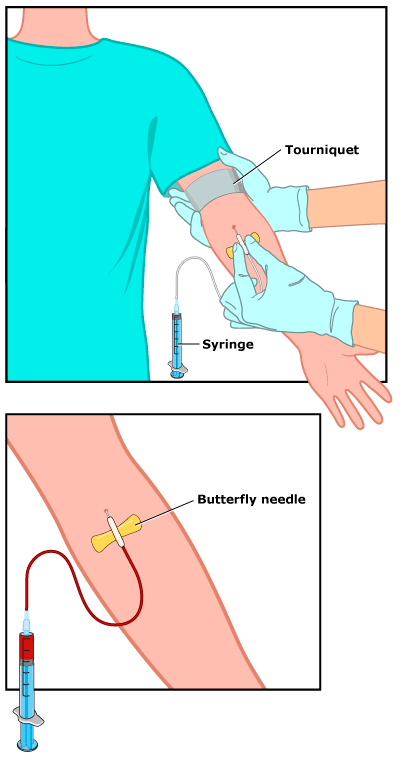Blood Test: Testosterone
Article Translations: (Spanish)
What It Is
A testosterone test measures the blood level of the male sex hormone testosterone. Testosterone, which plays an important role in sexual development, is produced mainly by the testes in boys and in much smaller amounts by the ovaries in girls. Testosterone is also produced by the adrenal glands in both girls and boys.
In young boys, testosterone levels are normally low. As puberty approaches — usually between the ages of 10 and 14 — the pituitary gland (a pea-sized gland near the base of the brain) secretes two hormones (luteinizing hormone, or LH; and follicle-stimulating hormone, or FSH) that work together to stimulate the testes to make testosterone.
Increased testosterone production is what causes boys to develop deeper voices, bigger muscles, and body and facial hair. It also helps the testes produce sperm, and it plays a role in speeding a boy's growth in height during puberty. Testosterone is also important for bone health.
Two separate assessments may be performed as part of a testosterone test:
- total testosterone, which measures the entire amount of testosterone in the body, including both the amount bound to proteins that help transport the hormone through the bloodstream and free testosterone
- free testosterone, which measures only the testosterone that's not attached to proteins
The doctor may order one or both tests. However, because sexual development involves many other hormones, a more complete picture can often be obtained by performing other tests at the same time, including an LH or FSH test. For example, low levels of testosterone can be due to a problem with the testes' production of testosterone or to the pituitary gland not making enough of the hormones that stimulate the testes to produce testosterone.
Why It's Done
Doctors may order a testosterone blood test if a boy appears to be entering puberty earlier or later than expected. High levels are associated with precocious (early) puberty, while low levels may indicate a delay in sexual development. In girls, high levels can be associated with the appearance of masculine characteristics, such as facial hair.
The test may also be used in either boys or girls to check for damage or disease of the testes, ovaries, adrenal glands, or pituitary gland, or to check for steroid use.
In teens and adults, testosterone levels can help doctors evaluate fertility or menstrual problems and sexual function.
Preparation
No special preparations are needed for this test. The doctor may want to perform the test in the morning, when testosterone levels usually are highest.
On the day of the test, it may help to have your child wear a T-shirt or short-sleeved shirt to allow easier access for the technician who will be drawing the blood.
The Procedure
A health professional will clean the skin surface with antiseptic, and place an elastic band (tourniquet) around the upper arm to apply pressure and cause the veins to swell with blood. Then a needle is inserted into a vein (usually in the arm inside of the elbow or on the back of the hand) and blood is withdrawn and collected in a vial or syringe.
After the procedure, the elastic band is removed. Once the blood has been collected, the needle is removed and the area is covered with cotton or a bandage to stop the bleeding. Collecting blood for this test will only take a few minutes.

What to Expect
Collecting a sample of blood is only temporarily uncomfortable and can feel like a quick pinprick. Afterward, there may be some mild bruising, which should go away in a few days.
Getting the Results
The blood sample will be processed by a machine and the results are commonly available after a few days.
Risks
The testosterone test is considered a safe procedure. However, as with many medical tests, some problems can occur with having blood drawn. These include:
- fainting or feeling lightheaded
- hematoma (blood accumulating under the skin causing a lump or bruise)
- pain associated with multiple punctures to locate a vein
Helping Your Child
Having a blood test is relatively painless. Still, many children are afraid of needles. Explaining the test in terms your child can understand might help ease some of the fear.
Allow your child to ask the technician any questions he or she might have. Tell your child to try to relax and stay still during the procedure, as tensing muscles and moving can make it harder and more painful to draw blood. It also may help if your child looks away when the needle is being inserted into the skin.
If You Have Questions
If you have questions about the testosterone test, speak with your doctor.
Note: All information is for educational purposes only. For specific medical advice, diagnoses, and treatment, consult your doctor.
© 1995-2024 KidsHealth ® All rights reserved. Images provided by iStock, Getty Images, Corbis, Veer, Science Photo Library, Science Source Images, Shutterstock, and Clipart.com

